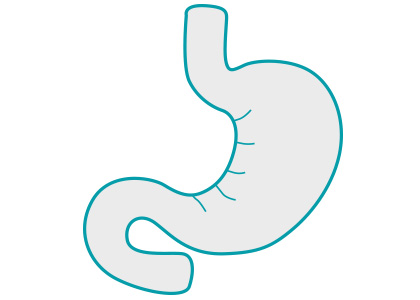Services
Gastroscopy
What is a gastroscopy and Why is it Performed?
 A gastroscopy, also known as an upper gastrointestinal endoscopy is performed using a narrow, flexible, telescopic camera called a gastroscope. The gastroscope is swallowed and passed down your esophagus into your stomach and then into the first part of the small bowel, the duodenum. A gastroscopy will help find out what is causing symptoms such as:
A gastroscopy, also known as an upper gastrointestinal endoscopy is performed using a narrow, flexible, telescopic camera called a gastroscope. The gastroscope is swallowed and passed down your esophagus into your stomach and then into the first part of the small bowel, the duodenum. A gastroscopy will help find out what is causing symptoms such as:
- 1heartburn
- 2repetitive vomiting
- 3difficulty swallowing
- 4long-term abdominal (tummy) pain
- 5unexplained weight loss
- 6iron deficiency anemia
What happens during a gastroscopy?
The procedure usually takes between five and 20 minutes.
We will ask you to put on a hospital gown. He or she will also ask you to remove dentures or dental plates, contact lenses, glasses and jewelry.
If you’re having a sedative, this is usually given through a fine tube (cannula) into a vein in your arm. Sedatives can sometimes affect your breathing. So while you’re sedated, we will monitor the amount of oxygen in your blood through a sensor attached to your finger and we may give you extra oxygen to breathe.
You will be asked to lie on your left side with your head bent slightly forward. We will place a mouth guard over your teeth before carefully putting the gastroscope through the opening in the guard into your mouth. Then we will ask you to swallow to allow the gastroscope to pass into your esophagus and down towards your stomach.
We may use a suction tube to remove excess saliva from your mouth during the procedure. Air will be pumped through the gastroscope and into your stomach to expand it making your stomach lining easier to see. The camera lens at the end of the gastroscope sends images from the inside of your body to a monitor. We will look at these images to examine the lining of your esophagus, stomach and duodenum.
If necessary, we will take a biopsy (a small sample of tissue) or remove small growths of tissue called polyps using a special instrument inside the gastroscope. The samples we collect will go to the lab for analysis.
What Happens After a Gastroscopy?
You will need to rest until the effects of the sedative have passed and will be able to go home when you feel ready. You will need to arrange for someone to drive you home and you should have a friend or relative stay with you for the rest of the day.
If you receive a local anesthetic, it may take several hours before the feeling comes back into your mouth and throat. Don’t try to eat or drink until you can swallow normally. Once you’re able to swallow, you can usually return to your normal diet. However, don’t drink hot drinks until the local anesthetic has fully worn off. We may discuss the general findings of the gastroscopy with you before you leave the clinic or you may be given a date for a follow-up appointment.
Recovering from a gastroscopy
If you need pain relief, you can take over-the-counter medicines, such as tylenol.
Most people have no problems after a gastroscopy, but you should contact your doctor if you:
- cough up or vomit blood
- have blood in your feces
- have abdominal pain or shoulder pain that gradually gets worse, or is more severe than any pain that you had before the test
What are the risks?
As with every procedure, there are some risks associated with gastroscopy. These risks are specific to you and differ for every person. Ask your doctor to explain how these risks apply to you.
Side-effects
These are the unwanted, but mostly temporary side-effects you may get after having the gastroscopy:
- you may have a numb throat for a few hours
- you may have a sore throat or stomach pain for a few hours
- you may feel bloated, but this usually passes quite quickly
Complications
Most people will not experience any complications during a gastroscopy however some uncommon issues that may occur are:
- bleeding, particularly if a biopsy has been taken
- tears to your esophagus, stomach or duodenum, if a biopsy has been taken or a polyp has been removed
- a reaction to the sedative, such as a skin rash, difficulty in breathing or heart problems
Preparing for a gastroscopy:
Let your doctor know if you are taking anticoagulant medicines (medicines that prevent your blood clotting) such as heparin, clopidogrel (Plavix) or warfarin.
Your stomach needs to be completely empty so your doctor can see the lining of your stomach and duodenum clearly. You will be asked to follow fasting instructions. Typically, you must not eat or drink for eight hours before your gastroscopy. However, it’s important to follow your doctor’s advice. You may be given local anesthesia, which is usually given as a throat spray. You will usually be offered a sedation to help you relax, which is given as an injection at the start of the procedure. The medications that may be given include propofol, versed and fentanyl.
You can have the discussion with your doctor at the time of consultation to learn what to expect at the time of your procedure. This will help you to be informed, so you can give your consent for the procedure to go ahead, which you may be asked to do by signing a consent form.
